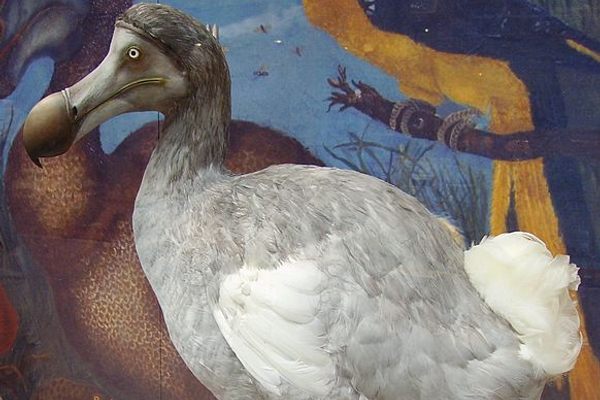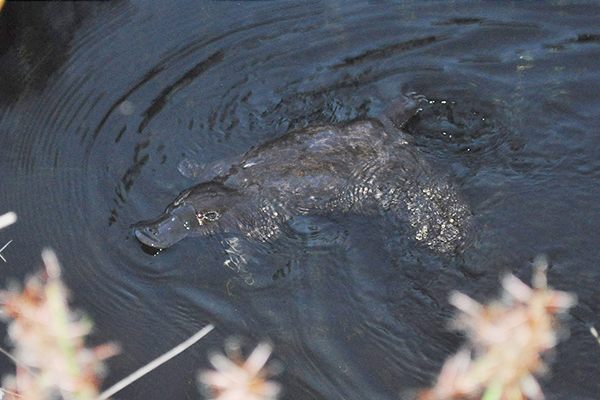Alice, Oxford, and the Dodo
“At last the Dodo said, ‘everybody has won, and all must have prizes.’” — Alice & the Dodo (1865 illustration by John Tenniel)
When seeking inspiration for his stories of wonder and mischief for the Liddell girls, Oxford mathematician Charles Dodgson (better known by his pen name Lewis Carroll) often turned to the wonders and delights he found in the halls of one of his favorite haunts: The Oxford Museum of Natural History. Housed in a soaring stained glass temple to nature, the young academic was often seen admiring the exotic specimens, including the museum’s most famous resident: the Oxford dodo.
The now familiar character of the Dodo in Alice in Wonderland, who challenges Alice and other woodland creatures to a race with all winners and no losers, was Dodgson’s playful nod to himself, and his habit of stammering nervously, introducing himself as “Do-do-dodgson.” John Tenniel brought the scene and the Dodo to life in his illustrations for the book, familiar to every school child since.
Jan Savery’s dodo painting, now at the Oxford Museum of Natural History (source)
Tenniel, like Dodgson, turned to the collection at Oxford for inspiration, meaning that Alice’s dodo is not just a dodo, but this dodo, illustrated by the Dutch painter Jan Savery in 1651, before the bird was driven into extinction. This painting had come into the collection of the Oxford Ashmolean collection — the world’s oldest university museum — and was later passed into the collection of the Natural History Museum along with the only two known dodo remains still partially covered in flesh.
An early map of the island of Mauritius, showing the location of the dodos (source)
Although famous now, the dodo was not always so well known. The rare bird, first documented by Dutch sailors in 1598, was found only on the island of Mauritius, and is generally thought to have been driven completely to extinction by the end of the 17th century, if not earlier. For such a famous creature, surprisingly little concrete information is known about it. Early descriptions by hungry sailors primarily focused on the ease of catching the flightless birds, and what they tasted like (not particularly good, apparently). Descriptions of size and plumage varied with the observer, and period illustrations, often rare and not particularly skilled, showed what could be interpreted as assorted different birds.
Various depictions of the dodo (source)
Once popular with kings and collectors, an estimated 11 live birds and an unknown quantity of dead specimens were exported from Mauritius to Europe and beyond, where they fascinated illustrators and artists like Jan Savery and his father before him. Dozens of paintings were created in the era after the dodo’s discovery and before its sad departure from this world. Unfortunately for us, these artists too took great license illustrating the bird in various fanciful ways. Those that were created from live models often ended up depicting unnaturally fat animals, plump from their lives of luxury. Others were created based on stories and hearsay, upon other artists’ drawings, or based on skeletal or taxidermy remains of dead birds.
As a result, we know little about the life, behavior, and even the appearance of the dodo.
All of this could be corrected if only researchers could gain access to a complete preserved specimen or skeleton. Sadly, these do not exist. Despite the plethora of many cheerful replicas of the dodo in museums around the world, these are fabrications, mostly created decades, if not centuries, after the bird’s extinction.
Yet this once unfortunate but nearly forgotten chapter in Dutch seafaring history, the dodo had something of a renaissance in the Victorian era.
The dodo came into the British Victorian consciousness through an 1833 publication by the wonderfully named, but short-lived, Society for the Diffusion of Useful Knowledge. The tragic story of the extinct bird was published in their weekly Penny Magazine.
By the time Dodgson was spinning his tales in the mid 1860s, the dodo had become firmly re-entrenched in the European mind; a cautionary tale about human intervention in natural matters as well as an object of curiosity, inspiring the museum curators and taxidermists of the time to turn to spare parts and features from geese and swans and others to create their own likenesses of the lost bird. And one day, an author and his muse saw these paltry remains and fanciful gaffs and gave them new life, thus turning tragedy into inspiration.
The dodo display at the Oxford Museum of Natural History (source)
FURTHER READING
The Oxford Dodo - Oxford Museum of Natural History
“Learning More - the Oxford Dodo” - Oxford Museum of Natural History
VISIT (PARTS OF) THE DODO
OXFORD MUSEUM OF NATURAL HISTORY, Oxford, England
CAROUSEL OF EXTINCT AND ENDANGERED ANIMALS, Paris, France


















Follow us on Twitter to get the latest on the world's hidden wonders.
Like us on Facebook to get the latest on the world's hidden wonders.
Follow us on Twitter Like us on Facebook